Zero-OS Compute System
Zero-OS is a minimalist operating system built on the Linux kernel, designed specifically for distributed computing environments. It eliminates unnecessary complexity while focusing on essential system functions.
Core Architectural Principles
Zero-OS is designed around three fundamental principles:
-
Autonomy: The system operates without requiring remote or local administrative maintenance, which is essential for a globally distributed grid architecture.
-
Simplicity: The OS implements only essential components, reducing complexity and enabling deployment with minimal resource requirements.
-
Stateless Design: Zero-OS instances maintain no persistent local state, with state information stored within the grid itself, ensuring system stability despite node failures.
System Architecture
Core Components
Zero-OS implements a minimalist architecture supporting only essential primitives:
- Compute Capacity Management: Allocates computing resources through lightweight virtualization
- Storage Capacity Management: Implements file deduplication and distributed storage mechanisms
- Network Capacity Orchestration: Provides secure overlay networking with cryptographic verification
Compatibility Layer
- Docker container support
- Virtual Machine (VM) compatibility
- Linux workload support
- Integrated distributed storage and network primitives
- Smart contract integration for IT resource allocation
Technical Implementation
The distributed architecture generates compute capacity through several key components:
- ZKube: Specialized Kubernetes deployment optimized for distributed environments
- Zero VM: Container/VM runtime environment providing isolated execution environments
- CoreX: Optional process management system for secure remote access to Zero VM instances
Security Architecture
Zero-OS incorporates security at every level:
- File Integrity Verification: Cryptographic fingerprinting verifies application integrity before launch
- Reduced Attack Surface:
- No shell or server interface exposed in the operating system
- End-to-end encrypted network communication between nodes
- Network/compute isolation architecture separating compute/storage from network services
- Container Isolation: Enhanced security through dedicated virtual machines for container execution
- Autonomous Operation: Reduction of attack vectors by eliminating human error potential
Deployment Process
Zero-OS implements a network boot architecture that delivers the OS to nodes over the internet:
- Hardware deployment at the desired location
- Resource farm configuration via grid explorer interface
- Bootloader configuration via USB media or network boot
- Network initialization and power-on
- Automatic OS component retrieval from the network
This enables a stateless architecture where the OS runs without installation on local storage, enhancing security and deployment efficiency.
Current Implementation Status
The core Zero-OS compute technology has been in production for multiple years:
- Zero-OS Core: Production implementation
- Zero-Images Architecture: Production implementation
- Zero-Install Architecture: Production implementation
- Smart Contract for IT: Available for OEM (general availability in ZOS v4 release, H2 2025)
- Deterministic Deployment: Available for OEM (general availability in ZOS v4 release, H2 2025)